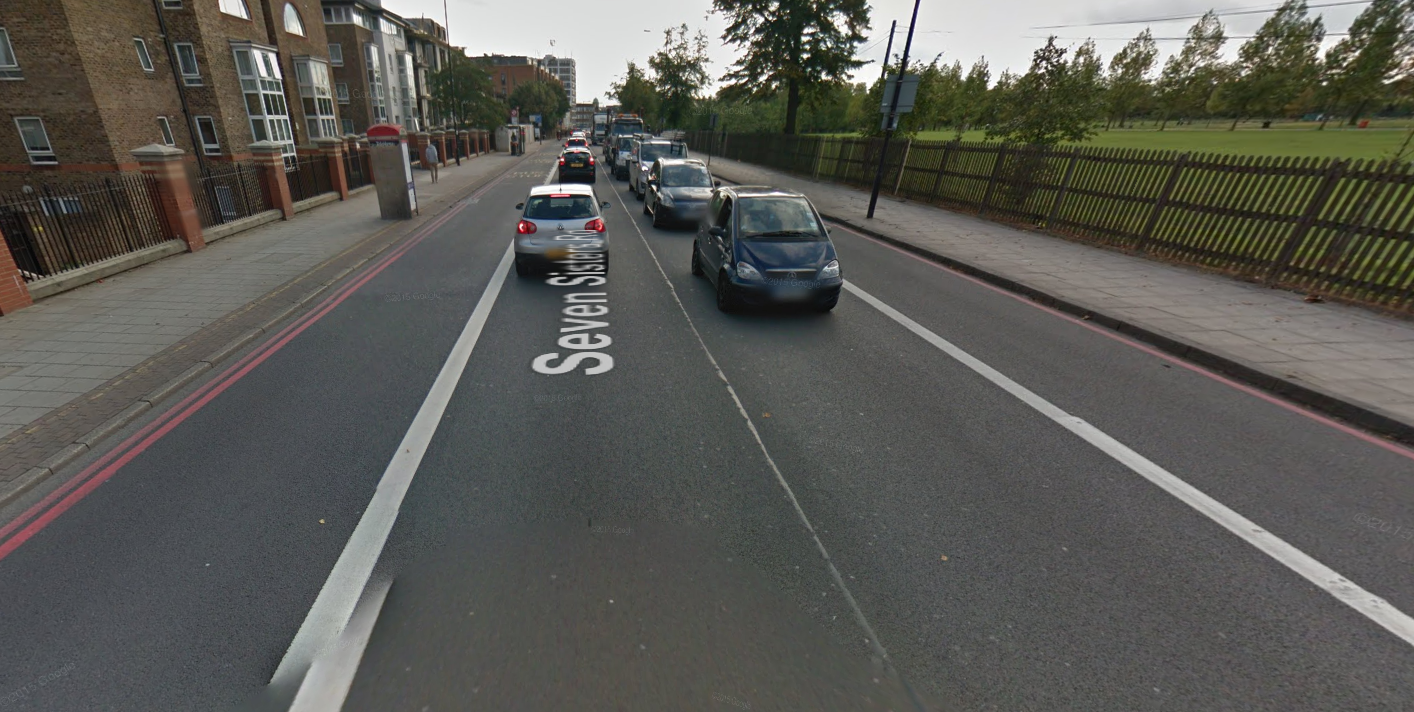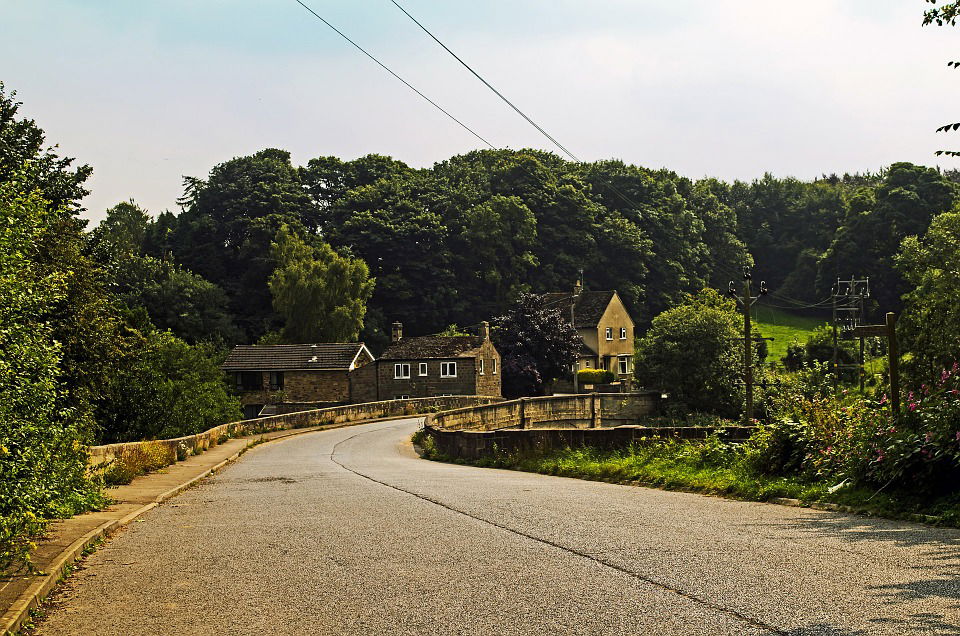Removing White Lines From Roads Is A Dumb Idea That's Actually Happening In Britain

Believe it or not, it turns out British highway chiefs have been removing white lines from busy roads in order to slow motorists down. According to research, removing the central white lines reduces driver speed and makes people drive more cautiously, and therefore councils across the country are considering implementing similar schemes.
I don’t even know where to begin with how stupid this idea is. First of all, it seems to work on the assumption that the only reason cars ever crash is because people are speeding. That might be the view of the anti-car brigade, but it’s simply not true. Yes, speeding can exacerbate damage in the event of a crash, or increase the risk of an accident occurring, but there’s a time and a place to go fast and simply targeting a blanket reduction in speed won’t fix anything without education.
By removing the central white line, research shows that drivers are more cautious because it introduces an element of uncertainty over their road positions. According to Transport for London, which experimented with removing the white lines on three major roads, speed was reduced by an average of 13 per cent. Great, but what about the risk of head-on collisions?

Coincidentally, I used to live in Haringey, so I know Seven Sisters Road - one of the trial roads - very well, and I can tell you that I can’t imagine how intimidating it must be not having any dividing markers. On larger sections of road, cars are kept separate, but on the two lane sections where the central lines were removed (see above) you have a lot of traffic, bus lanes either side, and people constantly walking back and forth across the road since it’s in a large residential area. That’s a lot of things to concentrate on without having to constantly worry about a head-on collision. Remember, the average driver isn’t like us, and isn’t necessarily the most confident or capable behind the wheel.
And anyway, introducing ‘uncertainty’ to a driver can’t be a solution to a problem. If you think about the number of things you have to concentrate on while driving and the number of things you have to be looking for in the distance, having a driver constantly scanning the centre of the road to check they’re not wandering too much is just adding an extra distraction.
It’s not often you’ll see me agree with something from the road safety charity Brake - it’s a noble cause but tends to be a little too black and white about what’s dangerous - but campaigns director Gary Rae sums up the problem pretty well. He said “While crashes at lower speeds can mean fewer deaths and serious injuries this data only seems to look at a possible reduction in average speed and not the number and nature of any collisions.”

Simply put, the research data only looks at marking removals’ effect on speed, and not its effect on crashes. I don’t see how this can do anything other than increase crash risk. White lines give us an easy-to-understand marker that helps us subconsciously place our car on the road while our conscious mind focuses on our surroundings.
One of my favourite quotes from this story comes from David Davies, the executive director of a parliamentary advisory group on road safety called PACTS, who said this process was most effective when lines were simply not repainted on newly resurfaced roads. He said: “A brand new surface can encourage drivers to go faster, but a lack of markings could counter that, reducing speed, say, from 35 to 28mph and that could make a significant difference.”
What exactly is this based on? Claiming people drive faster on newer roads is completely anecdotal, as he offers no research to back up the claim. He then plucks two random speeds from the air, and qualifies it all with a ‘could make a difference’. What he’s basically saying is ‘I have absolutely no idea if this will make a difference, but speeding is always bad so these measures are good.’ And this guy advises the government…

Aside from the fact that this surely makes roads inherently more dangerous, there is a technology argument against this, too. Many modern cars incorporate safety features that read the road and alert drivers to dangers, which would become ineffectual without reference points. Furthermore, as driverless cars become more prominent, removing the road markings that these vehicles rely on could cause serious problems.
It’ll be interesting to see how extensively this is taken up by local councils. For the moment, it appears to be happening in largely rural locations such as Norfolk, where speeds tend to be lower anyway. TfL has said there are no plans to actively remove lines in London, but seems pleased with how its previous tests went. I would be happy to hold my hands up and say I’m wrong if plenty of research shows that the risk of crashes decreases, but I feel like removing lines is a risky solution to fears over speeding. In my opinion you’re reducing one problem by creating another…
Sources: The Guardian and The Telegraph


Comments
Why is speeding such a big deal that theyre resorting to means like this.
Most of the road near me are missing there white lines not sure why and the amount of head on crashes are very low which is a shocker as many a time I’ve met cars in the middle of the road on the bends let alone the straights and most are tourists the locals who know the road still fly down it at the speed limit. We do have a odd number of cars ending up in the ditch or over into the bogs on the wrong side of the road which is odd as most roads bad roads have a yellow line to mark the edge.
Usually you can see a line where the road has been paved. Usually the white lines are painted on this central part of the road. Without white lines I usually use that as my guide line.
People who drive stupidly fast will keep driving stupidly fast.
People who drive safely will now drive in the middle of the road, right in the way of those people who drive stupidly fast.
Yup… seems like a great idea to me.
That’s the dumbest thing that I have read that a government is doing.
lol :) I am looking forward for my next visit in the UK. Me as a person grown up driving on the right side of road not the on the left , the markings on the roads in the uk was one of things that helped me not getting onto the wrong side of the road :D
They f*k up racing lines anyway
Not only that, but center lines even help in a crash. It’s much easier to determine who’s at fault.
So much logic applied… speed IS NOT THE PROBLEM. The problem is people that thinks that speed is the problem
Pagination